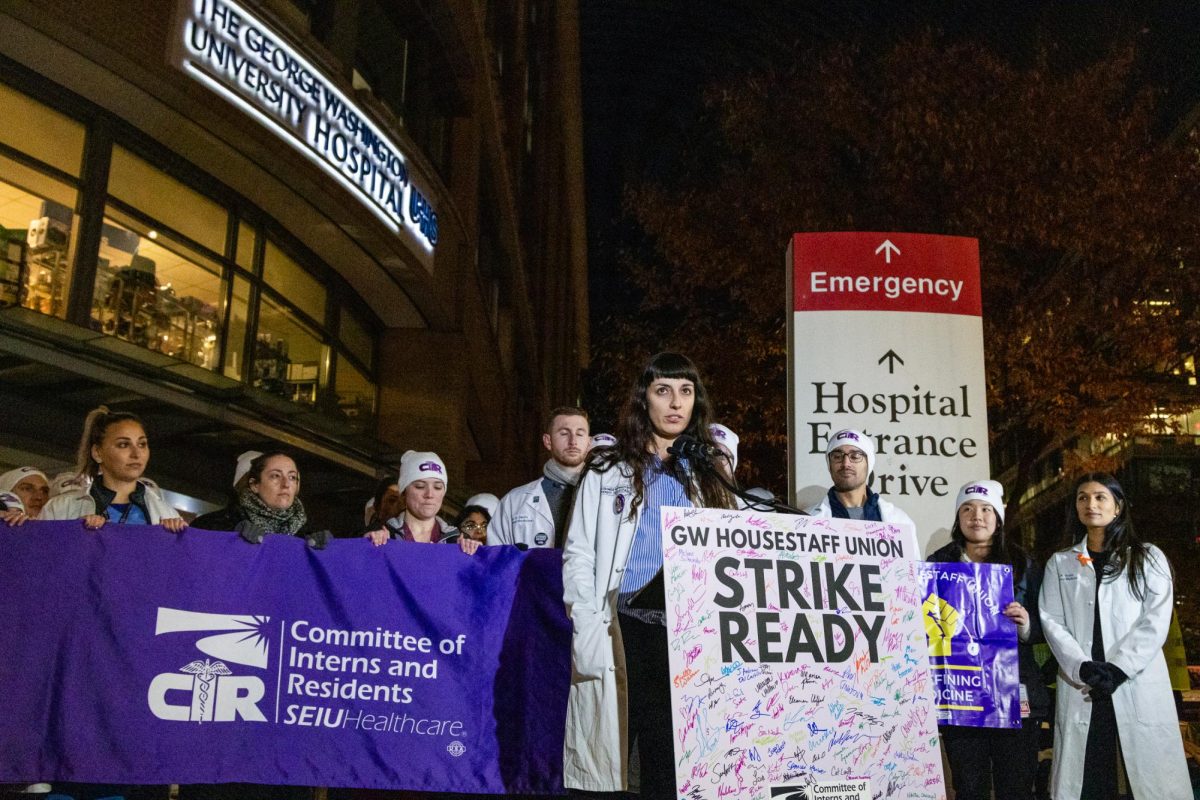
University President Steven Knapp called on all administrative units to make 3 to 5 percent budget cuts until 2021, starting with the 2017 budget year, according to a release. The announcement marks the second consecutive year of budget cuts, and is the most-far reaching since officials began warning of missed projections.
Last fall, officials made 5 percent cuts across nearly all administrative divisions following an enrollment decline in graduate and professional programs, which led to missed budget projections last fiscal year.
That budget crunch led to staff layoffs and trimmed academic departments. The music department was shrunk by about 40 percent and the creative writing program will lose eight faculty members this month. More than $8 million was slashed from the strategic plan last spring. Officials have also cut faculty hiring and delayed staff hires.
Knapp said in the release that while GW is “on track to rebuild our enrollments,” the additional cuts would be necessary to bolster its long-term financial health. In an interview in August, Knapp had said he did not anticipate more cuts after graduate enrollment increased this fall.
Last March, Knapp spoke out for the first time about GW’s budget situation, explaining that because GW relies on tuition for 75 percent of its revenue, any enrollment declines will hurt its bottom line.
“At that time, we were focused on turning around a relatively short-term problem,” Knapp said in the release.
GW now faces a more long-term problem that occurs at many schools nationwide, Knapp said in Wednesday’s release. There is a “growing disparity between the rising cost of these labor-intensive institutions and the stagnant or declining income and wealth of many students and their families,” he said in the release.
Knapp said by increasing fundraising for student financial aid and “finding savings in administrative processes,” GW has been able to maintain its fixed tuition policy, which keeps tuition the same for returning students. Tuition has increased by about 3 percent each year for the last eight years for incoming students, and crossed the $50,000 mark for the first time last year.
Knapp also said that because GW’s new budget model puts more revenue in the control of schools, its central administration needs “a corresponding reduction in size.”
“How far we will need to go in implementing those scenarios remains to be seen, but we will have a far easier time navigating the economic waters ahead of all universities if we have plotted our course in advance,” Knapp said in the release.
Knapp also said he has asked deans and vice presidents to come up with ways to operate more efficiently and remove “roadblocks.” Some faculty have questioned whether those efforts so far will do much to reduce bureaucracy and improve communication.
“Although this effort is not directly related to the cost-savings the administrative units have been asked to find, I have no doubt that, if we can identify ways to operate more efficiently and effectively, that will inevitably suggest ways of saving time and money we can invest instead in our core missions of education, research, and service,” Knapp said in the release.




